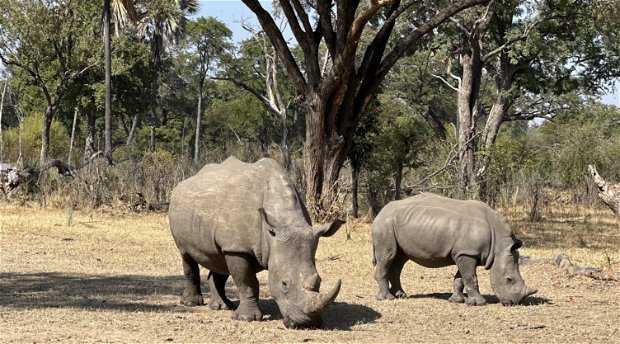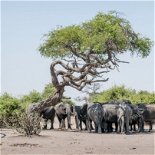The White Rhino: Majestic Giants of the African Savanna

White rhinos are large herbivorous mammals native to Africa. They are known for their massive size, with adults weighing up to 2.3 tons or more. Despite their name, white rhinos are not actually white; their name is thought to be a mispronunciation of the Afrikaans word "wyd," which means "wide," referring to their broad mouths.
There are two main subspecies of white rhinos: the Southern white rhino and the critically endangered Northern white rhino. The Southern white rhino population, once close to extinction, has seen a rebound due to conservation efforts, although it still requires protection. Unfortunately, the Northern white rhino is on the brink of extinction, with only a few individuals remaining and efforts being made to save the species through artificial reproduction techniques.
White rhinos are known for their gentle and social nature. They primarily feed on grasses and use their wide mouths to graze. Their horns, often a cause for poaching, are made of keratin and have unfortunately led to their decline due to demand in illegal markets. Conservation efforts are crucial to ensure the survival of these magnificent creatures.
Introduction: The white rhino, also known as the square-lipped rhinoceros, is one of the most iconic and fascinating creatures found in the African savanna. Despite its name, the white rhino is not actually white, but rather gray in color. In this blog, we will delve into the world of these majestic giants, exploring their characteristics, habitat, conservation efforts, and the importance of protecting these incredible animals.
Characteristics: The white rhino is the second-largest land mammal, surpassed only by its cousin, the African elephant. These magnificent creatures can reach an impressive weight of up to 2.5 tons and stand at a height of around 6 feet at the shoulder. One of the key distinguishing features of the white rhino is its square-shaped upper lip, perfectly adapted for grazing on grasses. They have two large horns made of keratin, with the front horn typically being longer than the rear one.
Habitat and Range: White rhinos are native to Southern Africa, primarily found in countries such as South Africa, Namibia, Zimbabwe, and Kenya. They prefer grassland habitats, savannas, and open woodlands where they can graze on the abundant vegetation. These rhinos are known to be social animals, often forming small groups called crashes, consisting of females and their young, led by a dominant male.
Conservation Efforts: The white rhino population has faced severe threats due to poaching and habitat loss. At one point, they were on the brink of extinction, with only a few individuals remaining. However, thanks to dedicated conservation efforts, the white rhino population has shown signs of recovery. Conservation organizations, national parks, and governments have implemented anti-poaching measures, increased patrols, and created protected areas to ensure the survival of these magnificent








Share This Post